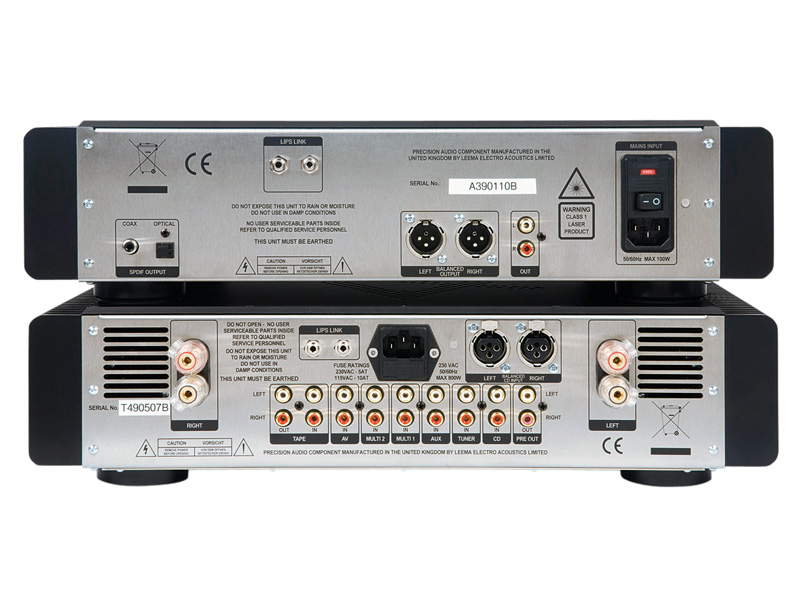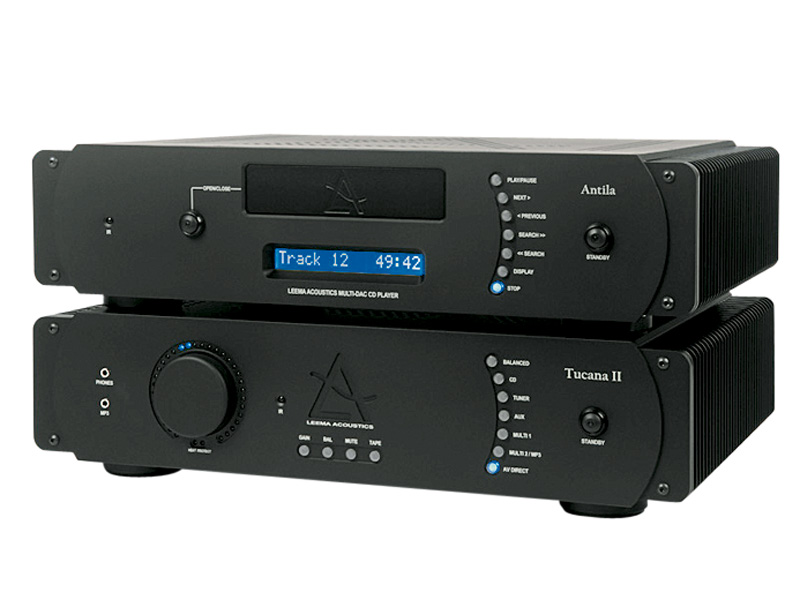TechRadar Verdict
These two products are some of the best British hi-fi has to offer. We recommend auditioning them if you can as the sound is superb from a variety of sources, including compressed ones
Pros
- +
Antila II
- +
Fast and accomplished performer
- +
Most revealing at its price
- +
But build and finish are excellent
- +
Tucana II
- +
More resolute and organic
- +
Great flexibility and fine timing
Cons
- -
Antila II
- -
The display could be easier to read
- -
Tucana II
- -
Slightly forward quality may not be to some tastes
Why you can trust TechRadar
Tucana II, as it has been dubbed, is now joined by a revised version of the Antila CD player bearing the same suffix which is also now known as the Antila II. We reviewed the first Antila a year ago and got a very engaging and revealing result, so naturally, we were very keen to obtain the revised model.
The changes are not huge, though – obviously Leema realised that as the player was hardly broke it didn't need fixing – just a bit of refinement. What Leema has done, however, is to replace surfacemount (SMD) components with hand-matched, high- grade alternatives in 'key areas of the player.'
Interestingly, this is the second instance of this approach that we've come across in recent times. Rotel has done the same in its new 15 series, so maybe SMD isn't quite as desirable as some make it out to be? The other change to the Antila II is to the analogue output filter, which is said to introduce less noise and cross talk than its predecessor.
The most striking aspect of this player is its use of no fewer than 20 DACs, in what Leema calls its MD2 topology. This parallel arrangement of 24/192 converters is said to produce 'analogue-like midband and high frequencies' and naturally lends itself to balanced output.

HOW MANY?: This CD player uses a whopping 24 DACs to produce an 'analogue like' sound
The most obvious change to the back panel of the Tucana II amp is the addition of balanced inputs to match the player, but it's the front panel that is really different. It has gained a row of switches which can be used to adjust input gain, alter channel balance, instigate tape monitoring and mute output. There is also a mini-jack input for your MP3 player next to the mini-jack headphone output, plus a shallower volume knob.

AMP INPUTS: A decent selection of inputs can be found on the back of the Tucana II so you can hook up the rest of your kit
Sign up for breaking news, reviews, opinion, top tech deals, and more.
Under the lid, the 'Altair project' has made its mark: the input and voltage amplifier stages have been re-designed to increase slew-rate and to make it more symmetrical on positive and negative swings, the goal being improvement of detail resolution and a resulting increase in image-precision. Leema has also lowered the impedance of the output stage which effectively increases the amp's ability to control a loudspeaker.
The transistors themselves have been changed to Thermaltrack devices, which have internal thermal sensors and are better able to combat heat distortion. Finally, the PCB layout has been optimised to minimise interaction between stages. All of which has added around £500 to the price of the Tucana II, making it one of the more expensive British integrateds on the market.

TOO HOT?: Not any more. The transistors have been upgraded with thermal monitors to better combat heat distortion
The remote control has also changed to a slimmer and more attractive device that operates both player and amp – its buttons arranged in a manner that suggests it shouldn't be too easy to change input when you want to change volume, a factor which undermined its predecessor.
The only minor irritation that remains is that output level drops when the input is changed, this may be more of an issue for a reviewer, but given that input gain is now adjustable it does seem a shade Kinnock-esque insomuch as it thinks it knows what's good for you!
In practical terms the display on the Antila II is a little bit deep in the casework which makes it hard to read at an angle, but you can easily defeat it with the remote for a subtle sonic improvement. There are no track access numbers, but keeping a digit on the 'next' button causes it to scroll through the tracks quite quickly – when you get there it goes straight into play. Or, at least, it does if you have programmed it to operate in the style of a DVD player, standard CD-style operation is the default. One surprise... the balanced output level is lower than the single ended, usually it's the other way around.
Build quality is very high with both units. The casework is made up of aluminium top, front and heatsinked side panels, with stainless steel used for the base and rear panel. The Tucana's rear end is now ventilated for extra cooling capacity.
Sound quality
We have been using the original Tucana amplifier as a benchmark for some time now, so it is interesting to hear what Leema has done to improve it. The only minor shortcoming with the Mk1 is a slightly forward quality that discourages high-level listening. Having said that, there are those that prefer this sort of balance because it is more lively and up beat.
Tucana II still has some of this characteristic – it sounds better at low and medium levels than high ones with our Bowers and Wilkins 802D loudspeakers – but the changes have brought about a reduction in background noise which means that you can hear more low-level detail. It is much easier to hear subtle details and the amp has a more natural, organic balance.
Alongside this is a distinct improvement in the dynamics department, the first Tucana was no slouch in this respect, so this is a remarkable achievement and one that means you hear the life and vitality in every recording that manages to capture it. It also means that the compressed ones sound very much that way, but that's the price you pay for fidelity.
Timing remains a strong point as well and this is reinforced when you add the Antila II CD player to the mix: both units are very much on-the-ball when it comes to the definition of leading edges. They do this rather better than most and without adding anything in the way of edginess. In fact, if anything, the balance errs on the dark side.
The CD player's top end is also a little more shut-in than our Resolution Audio Opus 21 reference, but it has a focus to it that allows you to hear precisely what the singers are saying rather better than the opus 21 – so, in many respects, it's a stronger contender.
Bass is very well served, the amplifier in particular having a chewy bottom end that gives bass guitars and drums a real shape and presence. The Smashing Pumpkins' Siamese Dream is a horribly compressed album, but it has some great guitar work which makes it worthwhile. With the Leema pairing this was augmented by heavy, juicy bass that times superbly. We got through three or four tracks before the call of duty reasserted itself.
It's clear that the refinements made by the Leema team have paid off. The original products were already good and the II-suffix kit is now even better. The Tucana II is the more changed of the two, both mechanically and sonically, and it sounds more earthy and organic for it. Its character is more up-beat than average, but now that impressive low level resolution has been added to the mix it is an amplifier to reckon with.
The Antila II is a fast and resolute player that should hold its own against anything in its price range and the way in which it times so well. Combine these qualities with high-quality build and you have a very welcome addition to the ranks of the British high end.
Individual Scores
Antila II: 5/5
Tucana II: 4/5
Follow TechRadar reviews on Twitter: http://twitter.com/techradarreview
